Iridicide
Cook a rainbow, and see what you've got left.
Labels: poesy
I've got Halloween candy. In fact I picked up two more bags when I was down in Lansing yesterday afternoon. Just hoping I'll have enough for this evening, enough for my two Confirmation classes plus any stray trick-or-treaters. I find I'm eating the stuff almost as fast as I can lay it in stock.
Now, here's something I never knew before. Many restaurants and fast food joints have secret menu items. Items not listed on the menu, but you can order them, and they have their own entry to be rung up on the cash register.
I'm trying to think when it was that I first saw a frying pan referred to as a "fry pan." Because they are, you know, frying pans. "Fry pan" has an oddly unidiomatic sound to it, as if coined by a non-native speaker of English. Yet in recent years I often see these common kitchen items referred to as fry pans.
Labels: language
Well, it turns out that the cat belongs to a neighbor. How it managed to wander two miles up the road I don't know. The neighbor says he thinks maybe the cat hitched a ride on his pickup and got off here. At any rate, the cat is now back home with two little girls who were missing their kitty.


I've been over visiting my folks in Wisconsin. My Dad is weeding out his books, so I came back with four grocery bags full of books. The White Company by Arthur Conan Doyle. Dwight Eisenhower's memoirs of World War II. Charles de Gaulle's memoirs of World War II. A biography of the Emperor Constantine. Worlds in Collision by Immanuel Velikovsky. And a whole stack of Doctor Doolittle books...
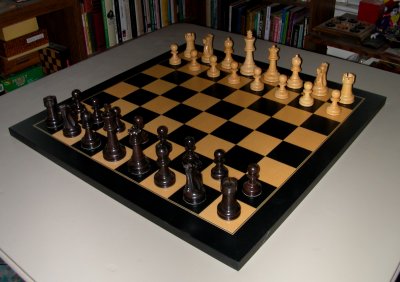
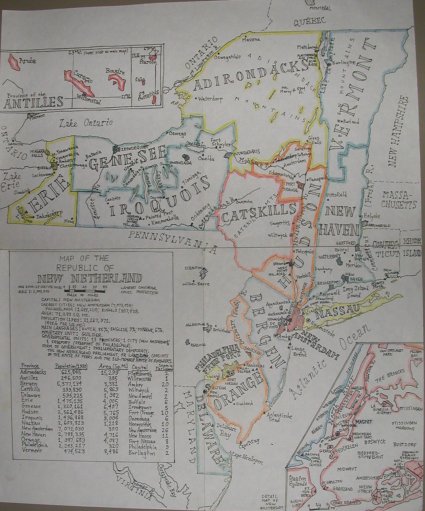
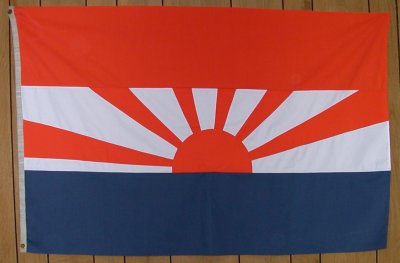
[In choosing] de Vries for the post... the States-General at a single stroke almost certainly prevented the Dutch colony in North America from eventually slipping out of their grasp...De Vries established good relations with the Five Nations of the Iroquois. He fostered a degree of self-government in the colony with the setting up of the College of Twelve, which was the forerunner of today's New Netherlander Parliament. He pressed for the Connecticut River [Varsche Kill] as the boundary between New Netherland and the English colonies in New England, and he annexed the Swedish colony of New Sweden, along the Delaware River [South River, Zuid Kill] as the Dutch colony of New Amstel.
De Vries had been a merchant skipper before coming to New Netherland. He was by all accounts a remarkable personality: shrewd, clear-headed, conciliatory but firm. De Vries was humane but unyielding in pressing forward to his goals... De Vries' first measure was to press for ending the fur trade monopoly of the Dutch West India Company. At the same time, he launched an intensive and successful campaign in Europe to draw a greater number of settlers to New Netherland. De Vries saw that the Dutch colony in the New World, if it was to survive, must become a true colony, and not just a station for a trading company.
They found a well-fortified city of eight thousand souls; de Vries had ordered the city prepared for the defense. In the ensuing battle, Dutch cannon sunk two of the English frigates, and the remaining two fled amidst fearsome volleys from the shore. The English attempt to seize the Dutch colonies in America had failed.The English were eventually to recognize the Dutch title to New Netherland. De Vries was succeeded on his death by Hendrik Watervliet as Director-General. It was Watervliet who concluded an accord with his personal friend, William Penn, to establish the city of Philadelphia as a city under Dutch sovereignty with free trade rights to and from Pennsylvania through Philadelphia. Watervliet also oversaw the organization of the two provinces of Hudson and the Catskills in the valley of the Hudson River [North River, Noort Kill], where Dutch patroons with their land-grant feudal manors had been vying with one another for influence and power.
Labels: worlds
And when you call me "Godthåb"— for "Greenland"— both to be drawn out long and low, as if an electronic voice through a loudspeaker— it is as if you were to call me "crown of the head"— in place of my proper given name— both to be spoken in that electric loudspeaker voice— as if expecting me to react just because it is in the same tone of voice as the sound of my name...
Labels: poesy
They were having some Sunday afternoon readings at the bookstore, with a painfully earnest audience, necks craned diagonally, sitting in plastic-and-tube-metal chairs, while earnestly painful speakers declaimed their way through short story and poem, like your high school forensics meet. I would have been glad not to be there. No doubt these people, English majors and public radio pledgers all, fondly imagine they are recreating some scene from around a Bronze Age campfire, "Listen to the storyteller!" I got news for you, baby: Homer was never like this. Homer was never leadfooted. Homer was never dull.
Labels: poesy
"...and then she flew to Kansas City, and she ended up dancing all night..."
Labels: poesy
Well. I seem to be losing weight. I steadfastly refuse to keep a set of scales in the house. But at the beginning of this year, my belt was on the second notch. Now my belt is on the fourth notch, and even that is becoming loose.
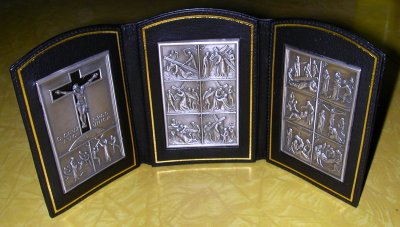
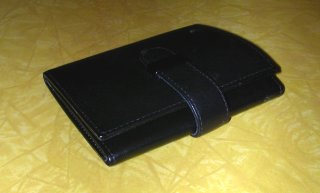
Labels: evangelion, gear
Last night I had a dream that somehow I was a student again at age 51, and I was back in North Carolina, this time not in Durham but in Chapel Hill. And I was going to catch a taxi out to some shopping mall, and I hailed a fellow driving a motorcycle-taxi.
Labels: dreams
ELVIS: THE REAL TRUTH, PART 2 [17] [27] [36] (Documentary; 1992) Bill Bixby hosts a sequel to the 1986 inquiry into the fate of Elvis Presley and his mysterious alleged "death." Featured: a tape recording purported to be from Elvis in hiding. Leads up to the dramatic climax of a grainy black-and-white video of a man striding toward the viewer down a narrow hallway, with the sun just behind his head so that his features are drowned out in a nimbus of light: "And as for Elvis, some folk say that he may some day soon
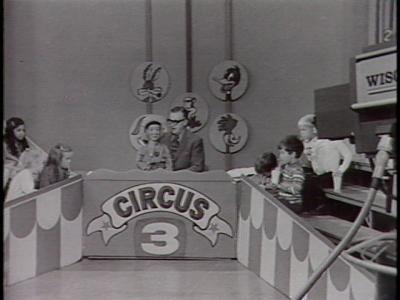
Q: What did the high step say to the low step?I dunno, demented as I am, I still think it's funny. You know? They're both steps! They're both made to be stepped on! Though it's one of those things, either you get it, or else you don't.
A: "You're too low to step on!"
Labels: auld_lang_syne
It just occurred to me. Leftists, ordinarily so blasé and so laissez faire over flag burnings, could be made to shed real tears (and not just crocodile tears) if you were to burn... a United Nations flag.
What's going on lately? After a string of highs in the 80s last week— Sunday it got up into the upper 80s, unbearable humidity— now these past couple of days it feels like October.
Oh wow. It's the surreal paintings of Vladimir Kush, Part 1. And also Part 2.
Labels: links

Labels: gear
Day after day with highs in the 80s. Last night at midnight it was only down to 76°. Now today once again the forecast is for highs in the mid 80s.
My favorite cola is neither Coke nor Pepsi, but RC.
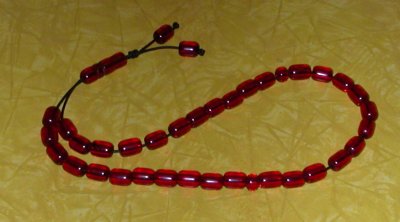
Labels: gear
They're tightening the screws over in the UK. First it was license plate reading cameras used for computerized tracking of every vehicle in the country. Then it was a smoking ban in the pubs. Now comes word of a growing trend in those newly smoke-free pubs: remove your hat, or get out.
The enforcement of such a bizarre rule as the 'hat ban' may be an attempt to assert control in the name of tackling crime... But the fact that such a ban seems to have been accepted at all shows how a demand for security and safety permeates society at present. It's interesting that while respectable pensioners have kicked up a fuss at the hat ban, younger people have tended to acquiesce to the demand to remove their headgear. In fact, surveillance is more or less seen as acceptable if it leads to a greater sense of security...You know, 10 or 20 years ago nobody would've believed such a ban would ever be implemented in the real world. Nobody would've imagined that people would stand for it. But the British license plate tracking scheme has already been imported to some cities in the US. Any bets on how long it'll be before the British "hat ban" follows?
What lies behind such demand for safety and security is a perception that individual autonomy is problematic in and of itself. Thus all individuals need some kind of rules and regulation because anyone can suddenly 'get out of hand'... there is something servile about forcing customers to 'remove their hats', with ugly echoes of the 'doffing your cap' reverence to society's supposed 'betters' in the past. In this case, it's a reverence to New Britain's principles of authority, order and knowing-your-place.
Labels: big_brother
Like many an American, I'm something of an ethnic mix. A mongrel, a mutt, if you will.
Labels: language